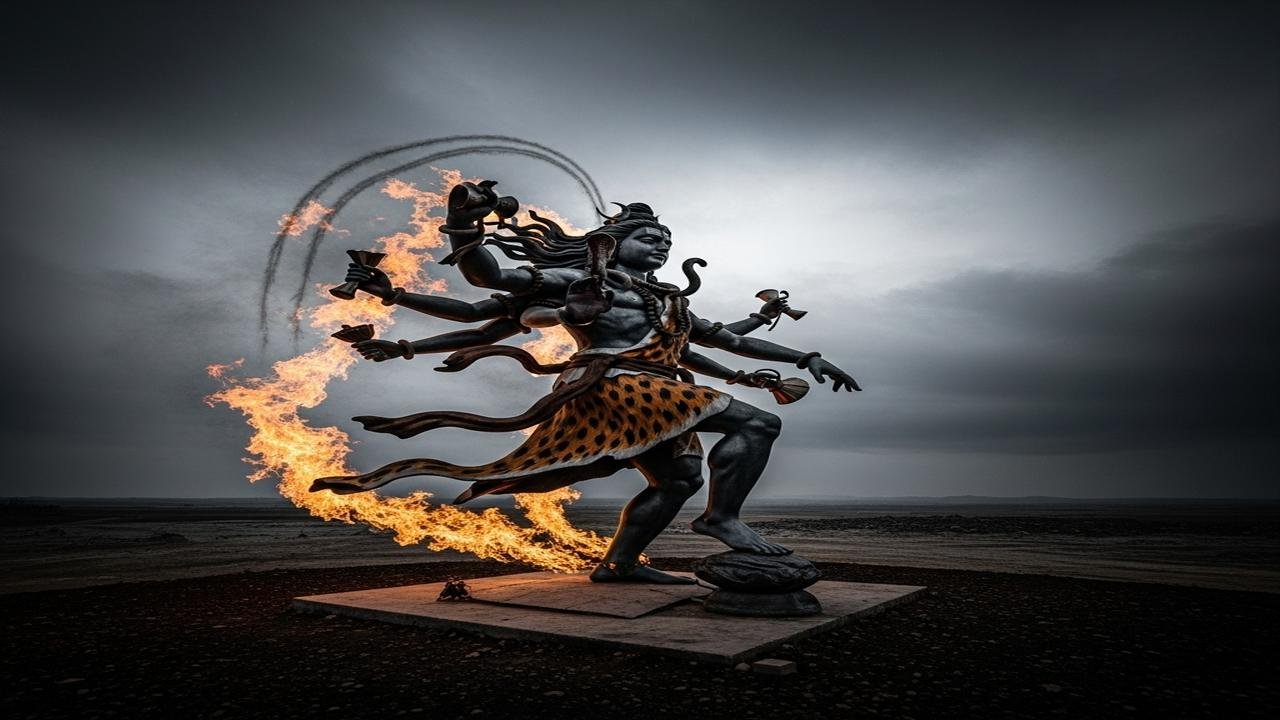Shiva the Destroyer How His Dance Clears Your Life

Why Is Shiva Called the Destroyer?
There is a soft hush in the temple courtyard at dusk. Bells ring. A line of devotees move forward, holding lamps and flowers. At the heart of their prayers is Shiva — often called the Destroyer. To someone new, that name can sound frightening. But in India’s long spiritual story, “destroyer” is a gentle, necessary role. It is not about cruelty. It is about clearing the ground so life can grow again.
Long ago, the Vedas spoke of a fierce being named Rudra. Over centuries, this figure became known as Shiva, the compassionate ascetic and cosmic dancer. In the Trimurti — the trio of gods — Brahma makes, Vishnu preserves, and Shiva dissolves. This cycle of creation, preservation, and dissolution is how the universe moves. Shiva’s work of destruction is part of that rhythm. Like autumn removing old leaves, he lets the new sun of spring appear.
Shiva’s destroyer aspect holds deep symbolic meaning. His third eye represents clear inner sight. When it opens, it burns away falsehood, ego, and illusions. The crescent moon on his head shows change and time. The river Ganga flowing from his hair reminds us that energy of life and purification can come from fierce places. His body smeared with ash points to the truth that all forms are temporary.
The Tandava, Shiva’s cosmic dance, is often called the dance of destruction. Yet the Tandava is also creative. As he dances, old forms dissolve and new forms are born. Artists and dancers through the ages have captured this idea: destruction here is not merely an end. It is a cleansing, a clearing of what blocks love, truth, and devotion.
Temples and rituals make this meaning visible. The Shiva linga — a simple, rounded symbol — invites us to connect with the endless, formless energy Shiva represents. On Maha Shivaratri, millions keep vigil, chant “Om Namah Shivaya,” and offer milk and bilva leaves. These acts are not about death alone. They are about letting go of habits, forgiving, and starting fresh.
Practices connected to Shiva often emphasize inner work:
- Meditation and silence: seeking the witness within.
- Chanting: repeating mantras to dissolve tension and fear.
- Simple living and austerity: learning to need less and love more.
- Funeral rites and cremation: honoring the body’s return to nature, reminding us of life’s fragile beauty.
History and culture also show Shiva’s softer face. He is the loving householder in many stories, a playful friend to sages, and a tender father to Ganesha. Folklore from villages to cities tells of his compassion for the poor, his playfulness with motherly Parvati, and his fierce protection of dharma (right conduct). This balance of fire and gentleness makes him easy to love and to lean on.
Today, Shiva’s role speaks to modern hearts. We face personal losses, changing jobs, broken relationships, and the constant push to perform. Shiva teaches us how to let go without fear. He asks us to see endings as openings. Yoga and meditation inspired by Shiva help people transform stress and grief into calm and clarity. His story reassures us that endings are not punishments but invitations to grow.
In art, dance, and temple bells, Shiva’s message is alive: destruction, done with wisdom, brings renewal. When we encounter endings in life, we can choose to meet them with courage and trust, like a devotee at the foot of the linga.
Conclusion: Let Shiva’s gentle destruction remind you that to lose what binds you is to make room for what heals you. When you let go with devotion, new life quietly begins.
